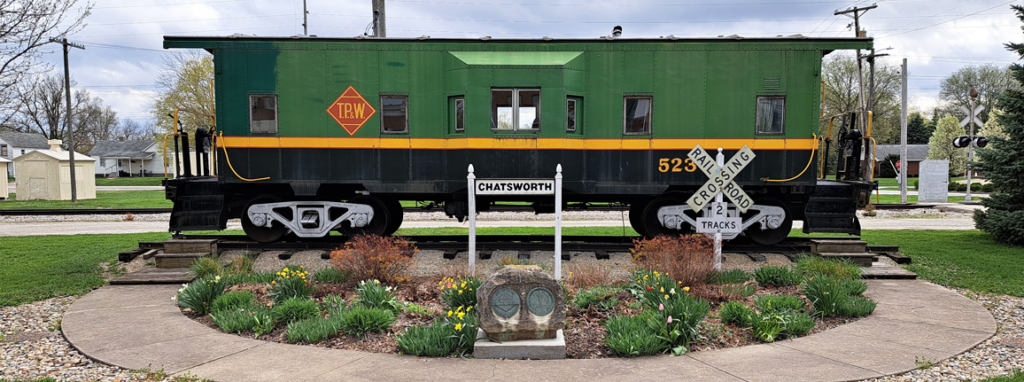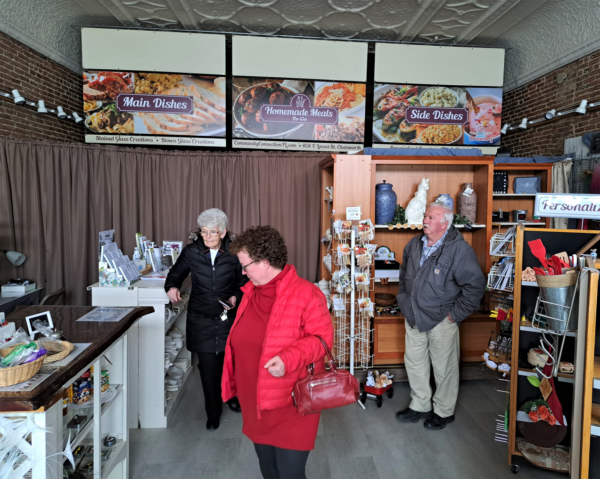Long ago, when I was in graduate school at the University of North Carolina, some fellow students who’d organized a conference about labor-related expressive culture asked me to go to Raleigh-Durham International Airport to pick up Norm Cohen, a scholar who was arriving to participate in that event.
On the ride back to Chapel Hill, I told Professor Cohen that I’d used his book, Long Steel Rail: The Railroad in American Folksong (University of Illinois Press, 1981/2nd ed., 2000), while doing research for a high school term paper on music of southern Illinois.
“Ah—were you writing about ‘The Bridge Was Burned at Chatsworth’?” he asked.
The answer to his question happened to be “no”—Chatsworth is in northeast-central, not southern, Illinois, and the song for which I cited Cohen’s book was, in fact, “Maud Wreck,” which commemorates a 1904 train accident in Wabash County—but that’s tangential to my point.
My point is that I was talking with someone whom I’d only just met about Chatsworth, Illinois—a town of approximately 1,200 residents, located 600 miles as the crow flies, or 750 miles by road, from where we were—and what prompted our conversation was a reference to an 1887 composition by Thomas P. Westendorf lamenting a horrific train disaster that had occurred there that year.
That catastrophe, one of the deadliest in American railway history, happened when a fire-damaged trestle bridge on the Toledo, Peoria, and Western Railroad collapsed beneath the weight of a passenger train. (More extensive descriptions are available here, here, here, and here, but be warned: the details are disturbing.)
Spark! Places of Innovation & Partner Exhibitions
The accident and its aftermath will be the subject of a companion exhibition, curated by Mary Fisher-Miller of Chatsworth Township Library, when Community Connection of Central Illinois hosts Spark! Places of Innovation, a Museum on Main Street exhibition from the Smithsonian Institution and Illinois Humanities, in Chatsworth from September 9 through October 14.
The supplementary exhibition will highlight local residents’ efforts to help the victims. “Both floors of the town hall were covered with the injured, to whom the fine women and men of Chatsworth were rendering every possible aid,” writes Cary Clive Burford.
That same spirit of generosity and cooperation has manifested itself in Chatsworth and its vicinity during happier times, as well, including the formation of the Prairie Central school district, encompassing several communities in Livingston and McLean counties, and the opening of the Central Illinois Connection Center, the venue for Spark!.

Community Connection: Front and Center
A formerly derelict, newly-renovated historic building on Locust Street—which was originally constructed just a few months after the infamous train wreck and might have been destined for wreckage, itself, had insightful volunteers not recognized its ongoing potential—became the Central Illinois Connection Center in 2018.
The mission of the organization that operates it, Community Connection of Central Illinois, is “to help Central Illinois thrive by engaging youth, enhancing the benefits of living here, connecting people and resources, creating employment opportunities, increasing tourism, and encouraging economic development.” Community Connection’s executive director, Mary Catherine Carter, is a retired accountant and substitute teacher who grew up in Livingston County and returned after living in other regions of the country for several decades.
Because of the organization’s notable progress toward achieving that mission, our partners at the Smithsonian selected Chatsworth as one of 30 small towns nationwide—including seven in Illinois—to be profiled in Spark! as loci of innovation. Of those seven Illinois towns, five, including Chatsworth, are among those hosting the exhibition during its statewide tour. Thus, observant viewers of Spark! at the Connection Center might notice within the exhibition a photograph of the very building in which they’re standing.
The Connection Center houses informative displays about agriculture, rural Midwestern folklife and traditional skills, various communities and places of interest throughout the region, and the dozens of local businesses that support the center’s activities. It regularly offers educational, artistic, and recreational opportunities for children, especially homeschooled students, as well as adults who have disabilities or are recovering from addiction.
Community Connection also provides extensive, up-to-date information about local amenities and activities through its website, regional events calendar, and Facebook page. Additionally, it operates the Community Connection Shoppe in a building next to the Connection Center. The Shoppe offers a wide variety of crafts, books, games, and apparel made by residents of the region. Shoppe customers can also purchase numerous food items produced and prepared locally.

Fairbury, Illinois: Chatsworth’s Partner Community
Speaking of food items produced and prepared locally, the Connection Center has hosted well-attended dinners showcasing the manifold, often innovative accomplishments of local farmers. And speaking of local agricultural innovation, it’s the reason why the nearby town of Fairbury, population 3,600, also appears in Spark!.
Surrounding Fairbury are numerous independently owned farms that produce a wide range of vegetables, fruits, grains, meat, and dairy products and market them, often cooperatively, to grocers and restaurants in the Chicago area. The Livingston-to-Cook County agricultural feedback loop has benefited the local economy substantially in the past two decades. Conversely, Fairbury-area farms sometimes host meals prepared by Chicago-based chefs who frequently buy their produce—simultaneously “farm-to-table” and “table-to-farm.”
Because Fairbury is only 12 miles west of Chatsworth, several Fairbury residents are contributing to preparations for Spark! there. They include local historian Dale Maley, as well as Mary Catherine, who has been instrumental in recruiting volunteers, obtaining sponsorships, and garnering publicity for the exhibition.
Mary Catherine also serves as president of the board of Fairbury Echoes Museum. That museum’s curator, Diane Pawlowski, is preparing an additional Spark!-adjacent exhibition examining the career of Francis Townsend (1867-1960), a Fairbury native, physician, and advocate for senior citizens whose innovative proposal for a national pension program led to the development of Social Security.
Calling Small-Town Central Illinois Home

On the other side of the age spectrum, Mary Catherine hopes that Community Connection’s activities might help small towns in central Illinois to retain promising young residents, such as Carly Vitzthum, a student volunteer who’s creating dioramas representing various aspects of local rural life to accompany Spark!.
“I grew up here, but at the age of 18, I just couldn’t wait to go to the city. You know, that was the big deal, and most of my classmates were the same way—but you see where I’m at. Thirty years later, I came back,” Mary Catherine commented. “The whole idea is to get the young people to realize that this is the best place to be. Go visit the city, but you don’t have to go live there to have a good life.”
Thanks to the dedication reflected in their preparations for hosting Spark! Places of Innovation, Community Connection’s volunteers just might succeed in persuading some of their region’s talented youth to put roots down in their native soil.
Furthermore, because the Connection Center will not only house Spark! but also appear in it, the next time a visiting scholar and a graduate student at a university several states away strike up a conversation about Chatsworth while driving from the airport to campus, perhaps their discussion will focus not on a dark episode in the community’s past as memorialized in a maudlin old ballad but rather on its potential for a bright future as celebrated in an exhibition from our nation’s flagship museum.
About Illinois Humanities
Illinois Humanities, the Illinois affiliate of the National Endowment for the Humanities, is a statewide nonprofit organization that activates the humanities through free public programs, grants, and educational opportunities that foster reflection, spark conversation, build community and strengthen civic engagement. We provide free, high-quality humanities experiences throughout Illinois, particularly for communities of color, individuals living on low incomes, counties and towns in rural areas, small arts and cultural organizations, and communities highly impacted by mass incarceration. Founded in 1974, Illinois Humanities is supported by state, federal, and private funds.
Learn more at ilhumanities.org and on Facebook, Twitter, Instagram, and LinkedIn @ILHumanities.
Featured Image: A view of the interior of the Central Illinois Connection Center